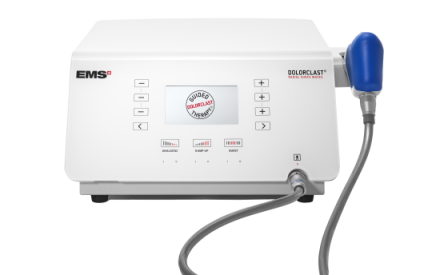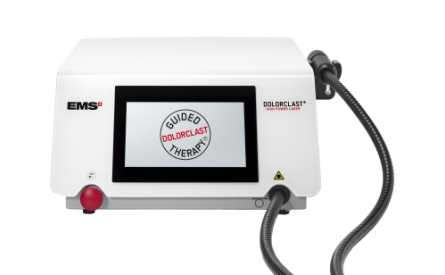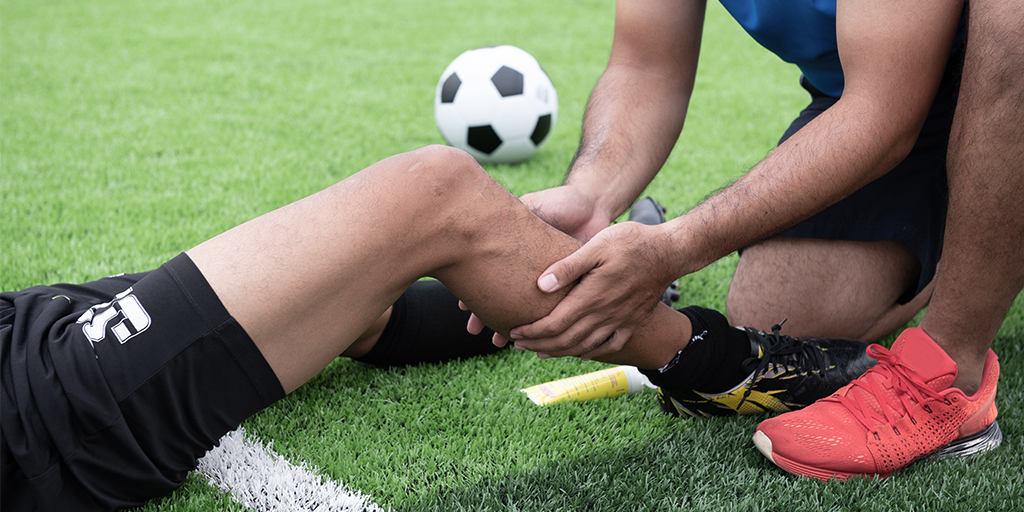
Return to play after treating acute muscle injuries in elite football players.
Morgan JPM, Hamm M, Schmitz C, Brem MH.
Return to play after treating acute muscle injuries in elite football players with radial extracorporeal shock wave therapy. J Orthop Surg Res. 2021 Dec 7;16(1):708. doi: 10.1186/s13018-021-02853-0. PMID: 34876172; PMCID: PMC8650394.
Full abstract: https://pubmed.ncbi.nlm.nih.gov/34876172/
Study background
Main goal of this study was to assess and compare recovery time after acute muscle injuries in elite football players subjected to different treatment approaches. Reviewing available studies of ESWT highlighted its strong beneficial impact on treating various musculoskeletal disorders. Therefore, researchers hypothesized whether implementing rESWT in the multimodal therapy approach will shorten the lay-off times and reduce re-injury rate.
How does the multimodal approach with the use of rESWT influences recovery time?
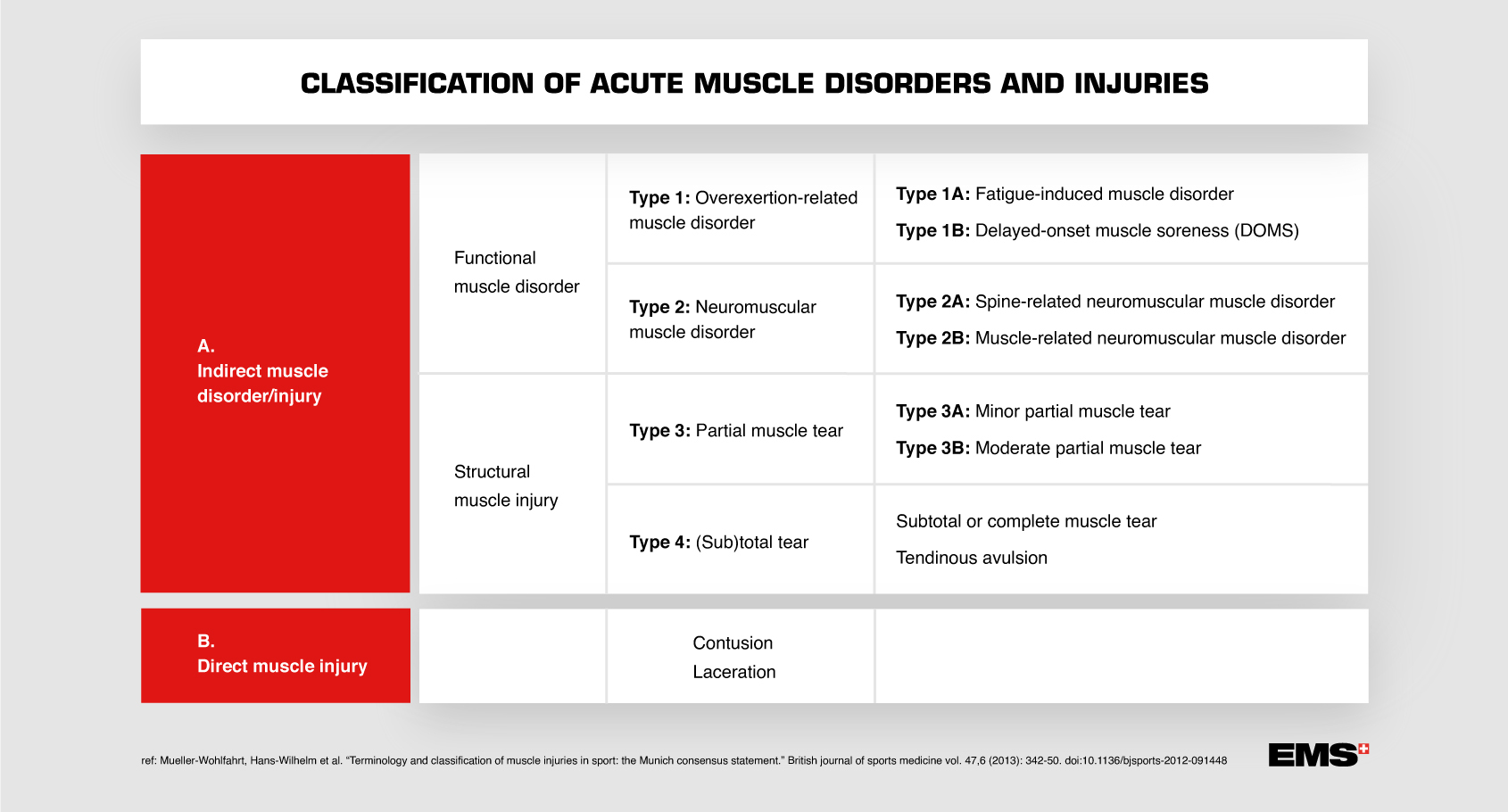
To explore it, the authors performed an extensive, retrospective analysis of 20 acute muscle injuries diagnosed with international guidelines. They were classified according to Müller-Wohlfahrt et al. as follows:
- 8 (40%) were diagnosed as type 1a,
- 5 (25%) as type 2b,
- 4 (20%) as type 3a,
- 3 (15%) as contusions.
There were no registered type 3b or 4 muscle injuries during the season.
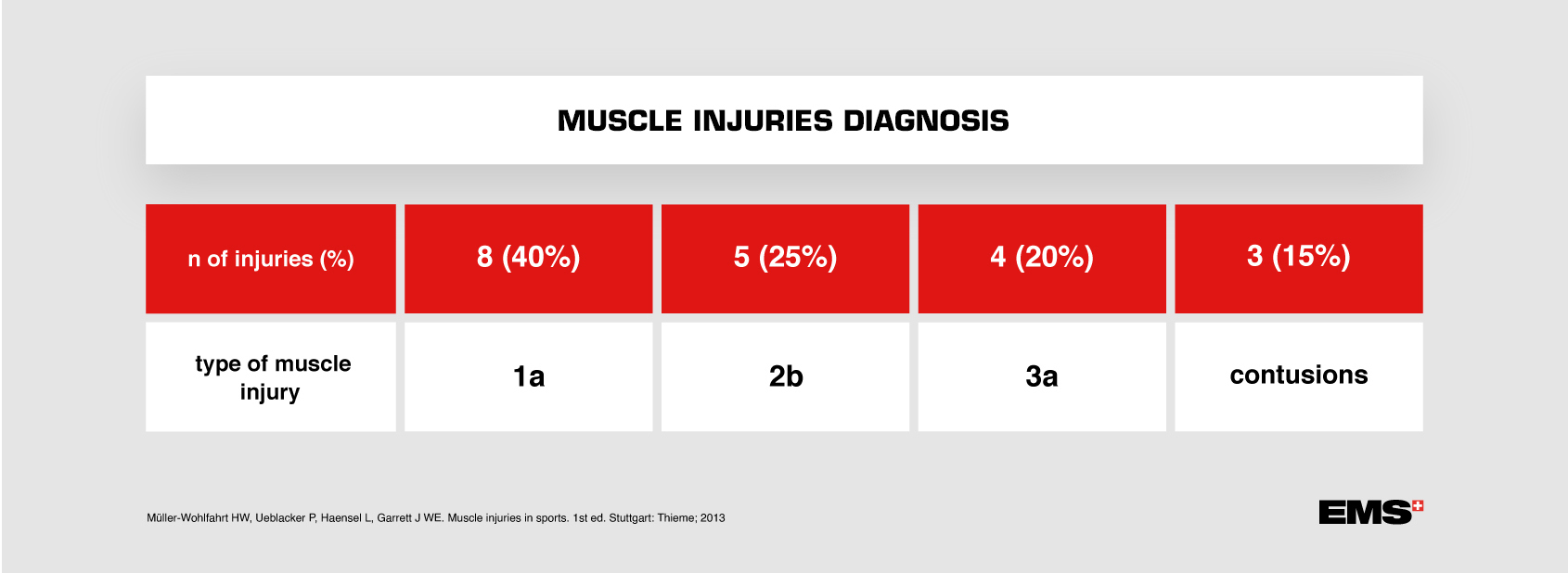
Multimodal therapy approach
Taking advantage of novel treatment solutions, all patients underwent customised, multimodal therapy which combined cryotherapy, compression, manual therapy, resistance or weight-training, progressive physiotherapy exercise programme and extracorporeal shock wave therapy. An experienced therapist decided whether applying radial or focused ESWT protocol will be more appropriate and effective for the patient. The majority of cases (19/20) were qualified for rESWT and only 1 case (contusion of the gluteus maximus muscle) was treated with the use of fESWT.
- rESWT was performed using a Swiss DolorClast device with an EvoBlue handpiece
- fESWT Swiss PiezoClast device and 15-mm gel pad.
Download our e-book on radial shock wave technology!
Proposed study outcome, defined as return-to-sport, was characterized by being able to fully participate in team exercises, including contact training, and being ready for the return to play during the championship.
Results
Return-to-sport was achieved after (median / mean / range):
- type 1a injuries - 3 / 3.3 / 2-6 days
- type 2b injuries - 4 / 6.2 / 3-14 days
- type 3a injuries - 4 / 4 / 4 days
Corresponding to a data set obtained from 31 European male football teams published by Ekstrand et al., multimodal therapy comprising ESWT has significantly reduced median lay-off times:
- type 1a injuries - by 54%,
- type 2b injuries - by 50%,
- type 3a injuries - by 8% (or 23% when classified as more severe 3b type)
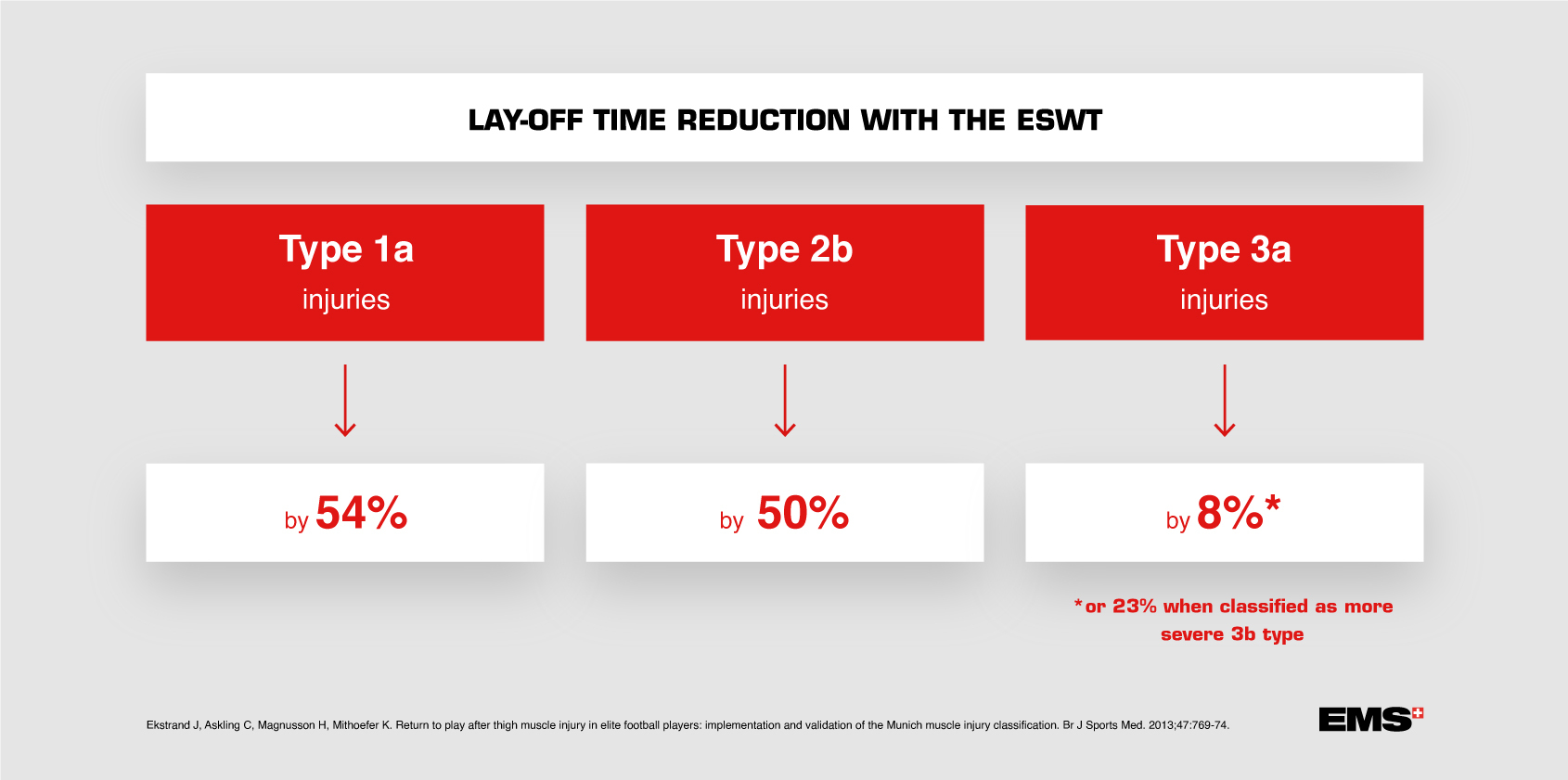
The authors also retrospectively analysed re-injury rate during the football season. Only 1 case of reinjury (previously classified as type 1a) occurred after the full recovery.
The study clearly presented satisfactory results demonstrating that pain (measured with Visual Analog Scale, VAS) was constantly decreasing during the course of the multimodal treatment. This is an extremely important success factor both for the patient and for the therapist, as it allows to intensify the treatment to achieve even better results.
Conclusion
Findings of this study
- incorporating rESWT/fESWT into a multimodal therapy approach is safe, effective and beneficial for the athletes suffering from various muscle injuries;
- specifically, median and mean lay-off times after type 1a (muscular tightness/hypertonicity) and 2b (muscular strain injury) muscle injuries were 50% shorter than comparable cases reported in literature;
- radial and focused ESWT can have an influence in re-injury prevention.
The therapy was well tolerated by the players and there were no adverse effects registered during the treatment sessions.

